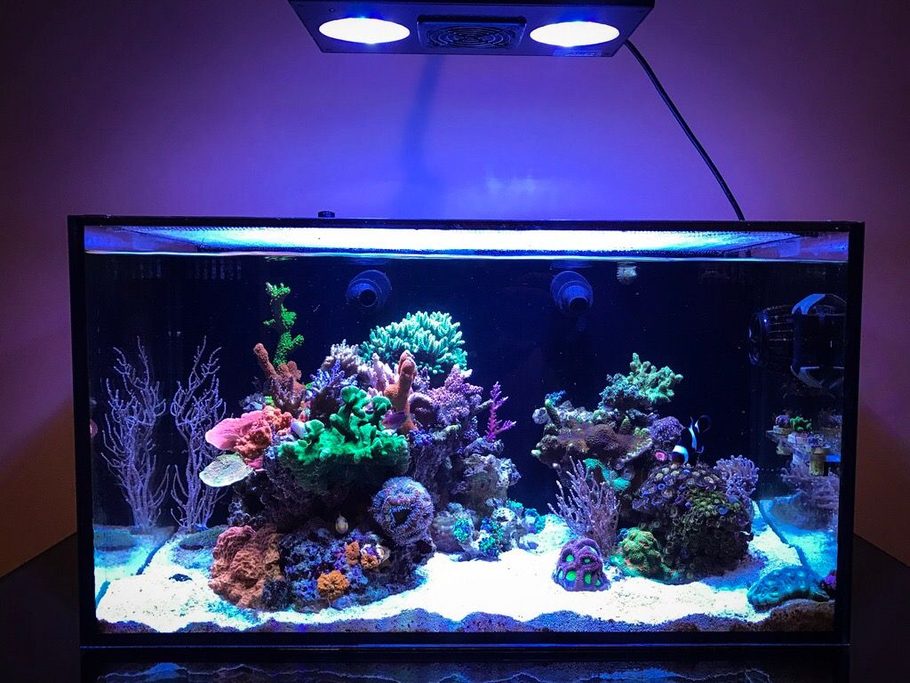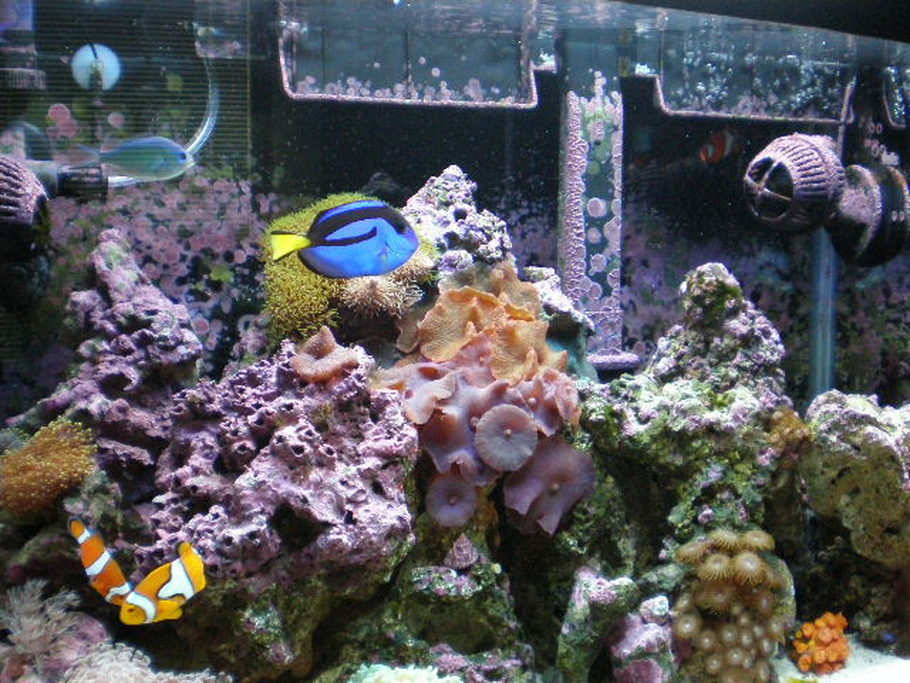DO YOU KNOW WHAT YOU ARE FEEDING YOUR FISH?

Updated
Not all aquarium fish food is created equal. Take the time to learn about the quality of the product you are feeding your fish to see whether it might be time to make a change.
When you go grocery shopping, you probably take the time to choose the items you intend to purchase. Perhaps you have a favorite brand, or maybe you check the label before you make your decision. As an aquarium hobbyist, do you put the same degree of effort into shopping for fish food? The chances are that you simply pick something off the shelf based on what’s on sale or what looks good – you probably don’t take the time to read the labels and, even if you did, you might not understand how to use that information.
Feeding your aquarium fish a high-quality diet is the key to keeping them healthy. A healthy diet gives your fish the energy their bodies need to maintain essential processes and it also helps to keep them looking their best. Unfortunately, not all fish foods are created equal and it isn’t always easy to pick out the good from the bad. Keep reading to learn how to read a fish food label, what ingredients to look for, and how to pick a high-quality product.
How to Read a Fish Food Label
The pet food industry as a whole is less regulated than the food industry for humans. This can sometimes make it a challenge to interpret the information on a pet food label – it also makes it more important for you to take the time to evaluate the quality of a product before you buy. There are two parts of the label that are the most important – the guaranteed analysis and the ingredients list. The guaranteed analysis is simply the breakdown of key nutrients by percentage, usually protein, fat, fiber, and moisture. The ingredients list is arranged in descending order by volume, which means that the ingredients at the top of the list are used in the highest volume.

When reading the fish food label, you want to make sure that everything lines up with the nutritional needs of your fish. Protein is a very important nutrient for fish and it may come from either meat-based or plant-based sources, depending which type of fish you have. Fish food should also be supplemented with vitamins and minerals as needed to meet the minimum nutrient requirements of fish. Be wary of products that include multiples of a similar ingredient, especially grains like corn or wheat. Many low-quality pet food manufacturers split ingredients like this into separate ingredients to make it look like there isn’t as much of it because it doesn’t appear at the top of the list. For example, a product might list wheat flour and wheat germ separately so they appear after fish meal as the main ingredient but, if the ingredients were not split, wheat would be first on the list.
Common Ingredients in Fish Food
Common Ingredients in Fish Food
As you take the time to read the fish food label, you should be familiar with some of the ingredients. Every product is different, but there are certain ingredients common among commercial fish foods. Here are some of the ingredients you may come across:
Fish Meal – One of the primary ingredients in most carnivore foods, fish meal is a quality source of aquatic animal protein.
Whole Fish – Many fish foods use whole fish ingredients instead of fish meal. Both are nutritious ingredients, the main difference is just that the fish meal is cooked down to 10% moisture before being used while the whole fish contains up to 80% moisture by volume.
Spirulina – Also known as blue-green algae, spirulina is a common ingredient in herbivore foods. It is a good source of plant protein as well as amino acids and vitamin B12.

Wheat Germ – Derived from the wheat berry and other parts of the wheat plan, wheat germ is rich in nutrients and highly digestible for fish.
Krill – A common ingredient in carnivore foods, krill are small shrimp-like crustaceans and an excellent source of protein, amino acids, and omega-3 fatty acids.
Algae Meal – A dried product made from blue-green algae, algae meal is a good source of amino acids, vitamins, and trace elements, though not as high-quality as spirulina.
Brewer’s Dried Yeast – This ingredient contains about 45% protein and it is rich in Vitamin B but it is not the best source of protein for fish.
Corn Gluten Meal – A plant-based protein derived from corn, corn gluten meal is not a preferred ingredient because it is not as digestible as other proteins and it is often used as a filler ingredient.
Rice Bran – This ingredient contains most of the nutrient content of rice and it is a good source of digestible fiber for fish.
Choosing a High-Quality Commercial Fish Food
The first step in choosing a high-quality commercial fish food is to know what kind of diet your fish follow. Just like other animals, fish can be carnivores, herbivores, or omnivores and if you don’t feed them the right kind of diet, they will fail to thrive and will likely die. Many commercial fish foods are developed for specific types of diet, so the easiest place for you to start your search is for a product made to meet the dietary needs of your fish. Once you have found a few options for the right type of food, you can evaluate the quality of each individual product to narrow down your options.
To further narrow your choices, take a look at the guaranteed analysis and ingredients list for each product and eliminate them one at a time based on quality until only the best product is left. Take a look not only at the ingredients at the top of the list, but also those at the bottom – this is where you are likely to find things like artificial colors, flavors, and preservatives. Be especially mindful of dangerous ingredients like ethoxyquin, a preservative that has been linked to negative health effects in pets. There is no need for artificial colors in fish food and any proteins should come from aquatic sources, not mammals or poultry.

Tips for Buying Live Food
Though most aquarium hobbyists use a commercial fish food as the staple diet for their fish, it is important to include a wide variety of foods in a fish’s diet – especially live food. Live foods retain their original nutritional integrity because they have not been processed or cooked. This makes the nutrients more biologically valuable for your fish – it also adds to the natural flavor. Live foods are great for aquarium fish, but you do need to be careful when buying them to ensure that they are safe. For example, tubifex worms are sometimes harvested from contaminated water sources and the toxins can be passed on to the fish that eat them.
Some of the safety live foods for aquarium fish include brine shrimp, daphnia, fruit flies, microworms, bloodworms (mosquito larvae), white worms, and earthworms. You can also buy feeder fish for larger carnivores, but you need to be careful to get them from a reputable source. In addition to being careful where you buy your live foods, you should also take the time to gut-load them before feeding them to your fish. Gut-loading simply involves feeding the insects or feeder fish healthy and nutritious foods so that those nutrients are passed on to your fish when he eats them. If you want to be extra cautious, you can even culture your own live foods and raise them on a healthy diet.
The quality of the diet you feed your aquarium fish has a direct impact on their health and longevity. Aquarium fish have specific nutritional requirements, just like any living thing, and you need to make sure that the diet you offer them meets those needs. When you meet the needs of your aquarium fish they will look their best and they will live long and healthy lives.





















